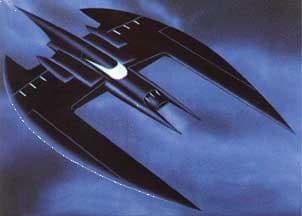-
(#5) The Great White Shark Likely Did Not Evolve From Its Big Cousin
Although the teeth of the great white and the megalodon are similarly shaped, the animals are different species. Scientists say great white teeth more closely resemble those of a mako shark.
-
(#9) It Was More Aggressive Than The Great White Shark
Great white sharks are portrayed in movies as aggressive creatures that hunt down entire families, but that isn't really the case. The sharks rarely attack humans since they are too high in muscle and low in fat. When they do hunt, though, great white sharks sometimes attack their prey from underneath, snatching it quickly and pulling it underwater.
The megalodon, on the other hand, is thought to have incapacitated whales by tearing off their fins and tails before eating them. Modern sharks typically only eat whales if they happen upon a tasty corpse.
The megalodon may have also attacked its quarry from below, but it would have ripped at the underside rather than pulling it under water.
-
(#12) A Fake Japanese Video Supposedly Shows A Megalodon
In late 2016, footage emerged of an alleged modern day megalodon in Japan. The clip promised the shark shown in the footage measured more than 50 feet in length.
In reality, the video was from 2008, and the shark shown was a Pacific sleeper shark. They typically reach 23 feet in length.
-
(#2) Its Jaws Could Crush Cars And Whales
Studies conducted by Stephen Wroe of the University of New South Wales in Australia found that the large jaws of the megalodon likely generated a maximum 4,000 pounds of bite force pressure. Its bite force was 10 times that of the great white shark, and even greater than that of the fearsome Tyrannosaurus rex. Theoretically, the prehistoric shark could use its jaws to smash a car like a junkyard crusher - although its approximately 7-inch long teeth would likely not survive.
Fossils of baleen whales living at the same time as the megalodon show bite marks from the fearsome creature - the real reason for the strong jaws.
-

(#3) Its Fossil Record Is Incomplete Due To Its Skeletal Makeup
Shark skeletons contain lots of cartilage, which does not hold up well after death. As a result, the megalodon's fossil record is incomplete. Estimates of the shark's appearance are based on what scientists have available to them: its teeth. The characteristics of megalodon teeth have led scientists to believe they were housed in a broad jaw. Sharks with broad jaws generally have a shorter face, like the great white.
Data collected from baleen whale bones with megalodon tooth marks have allowed other theories to emerge about how the giant shark looked.
In 2022, a study published in Historical Biology confirmed that scientists are still searching for proof of what the megalodon actually looked like. "The reality is that there are presently no scientific means to support or refute the accuracy of any of the previously published body forms of Otodus megalodon," the researchers said.
-
(#13) A Documentary On The Discovery Channel Fooled People Into Thinking It Still Existed
In 2013, the Discovery Channel kicked off its highly popular Shark Week with a "documentary" called Megalodon: The Monster Shark Lives. No indication was given that the piece was a work of fiction; instead, it features actors portraying scientists talking about hunting the creature. In the false narrative, a 67-foot-long megalodon terrorizes the coast of South Africa.
Scientific facts show that the continued existence of the megalodon is next to impossible. No teeth newer than 2.6 million years old have been found, intact or in pieces.
New Random Displays Display All By Ranking
About This Tool
Our data comes from Ranker, If you want to participate in the ranking of items displayed on this page, please click here.















